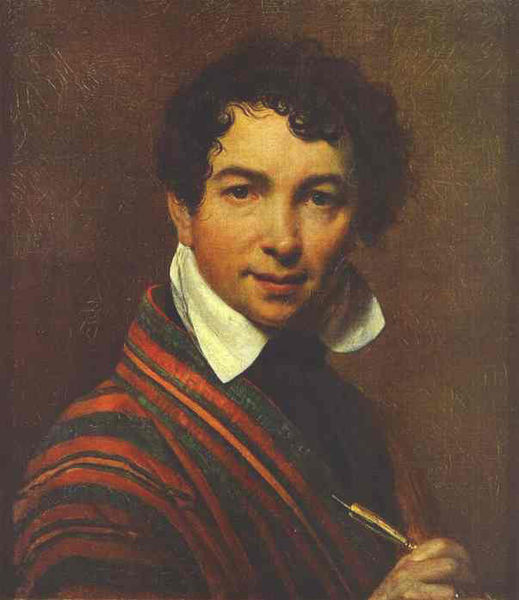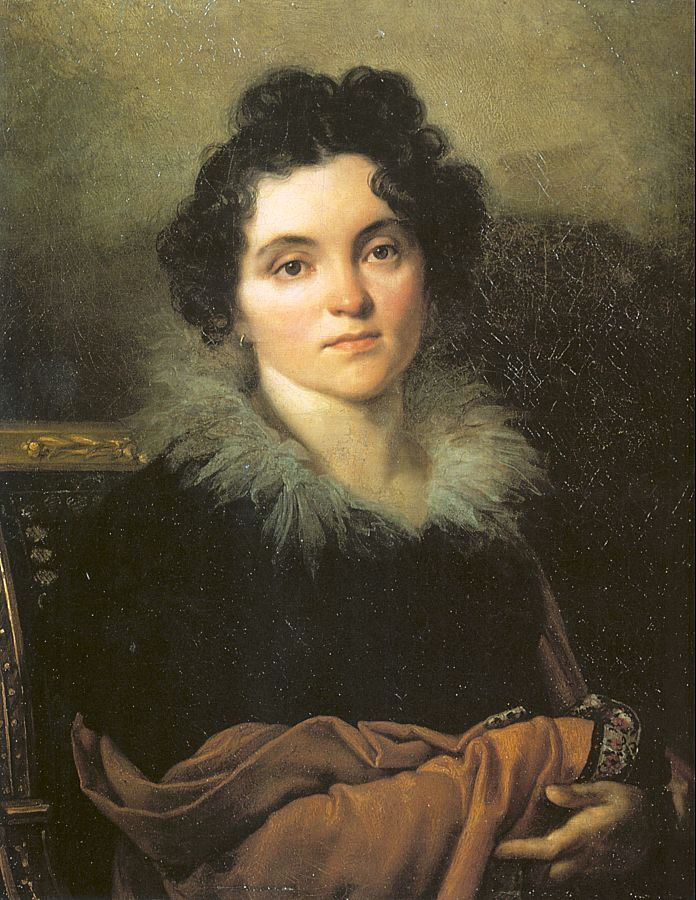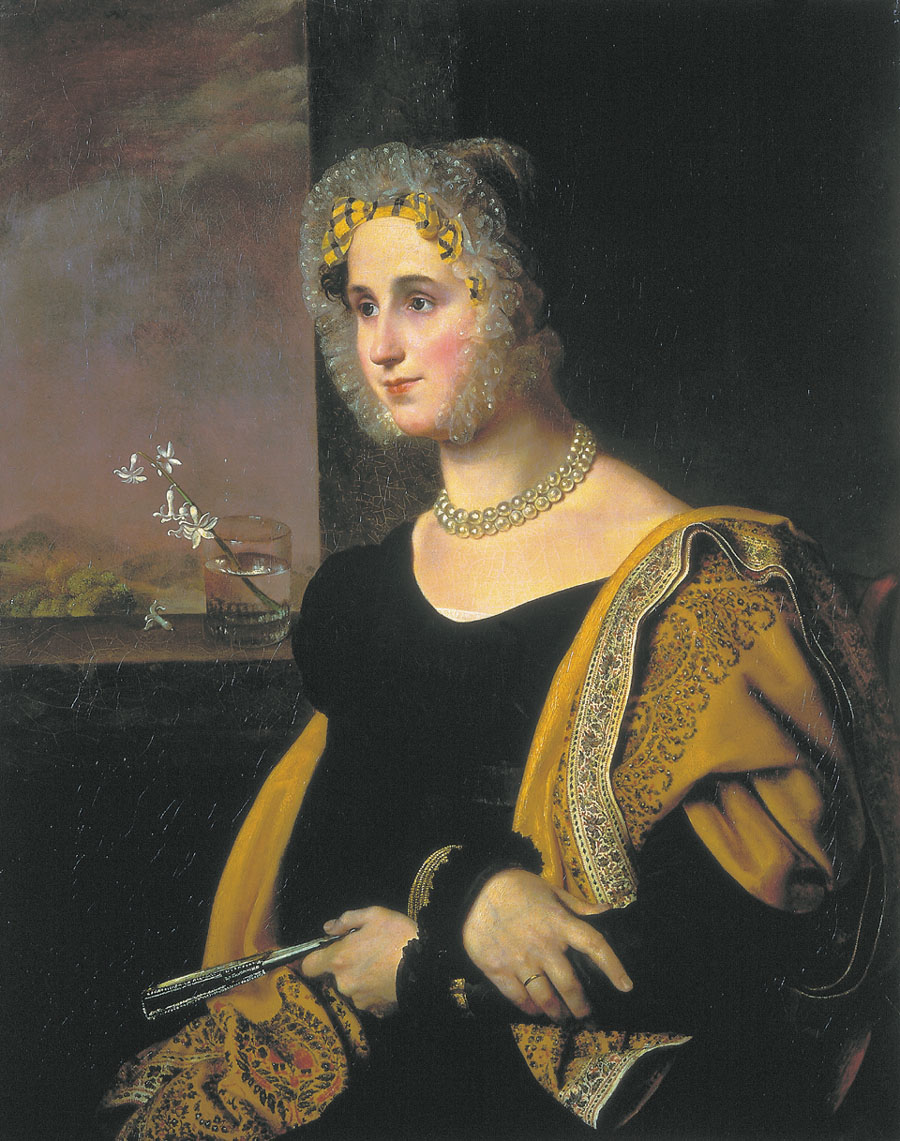<Back to Index>
- Mathematician Joseph Liouville, 1809
- Painter Orest Adamovich Kiprensky, 1782
- General Ignacio Zaragoza Seguín, 1829

Orest Adamovich Kiprensky (Russian: Орест Адамович Кипренский 24 March [O.S. 13 March] 1782-17 October [O.S. 5 October] 1836) was a leading Russian portraitist in the Age of Romanticism. His most familiar work is probably Alexander Pushkin's portrait (1827), which prompted the poet to remark that "the mirror flatters me".
Orest was born in the village of Koporye near Saint Petersburg on 24 March [O.S.13 March] 1782. He was an illegitimate son of a landowner Alexey Dyakonov, hence his name, derived from Kypris, one of the Greek names for the goddess of love.
He was raised in the family of Adam Shvalber, a serf. Although
Kiprensky was born a serf, he was released from the serfdom upon his
birth and later his father helped him to enter a boarding school at the Imperial Academy of Arts in Saint Petersburg in 1788 (when Orest was only six years old). He
studied at the boarding school and the Academy itself until 1803. He
lived at the Academy for three more years as a pensioner to fulfill
requirements necessary to win the Major Gold medal. Winning the first prize for his work Prince Dmitri Donskoi after the Battle of Kulikovo (1805) enabled the young artist to go abroad to study art in Europe. A
year before his graduation, in 1804, he painted the portrait of Adam
Shvalber, his foster father (1804), which was a great success. The
portrait so impressed his contemporaries, that later members of the Naples Academy of Arts took it for the painting by some Old Master - Rubens or van Dyck. Kiprensky had to ask the members of the Imperial Academy of Arts for letters supporting his authorship. After that, Kiprensky lived in Moscow (1809), Tver 1811, Saint Petersburg 1812, in 1816-1822 he lived in Rome and Napoli. In Italy he met a local girl Anne Maria Falcucci (Mariucci),
to whom he became attached. He bought her from her dissolute family and
employed her as his ward. On leaving Italy, he sent her to a Roman Catholic convent. In
1828, Kiprensky came back to Italy, as he got a letter from his friend
Samuel Halberg, informing him that they had lost track of Mariucci.
Kiprensky found Mariucci, who had been transferred to another convent.
In 1836 he eventually married her. He had to convert into Roman Catholicism for this marriage to happen. He died of pneumonia in Rome later that year.

